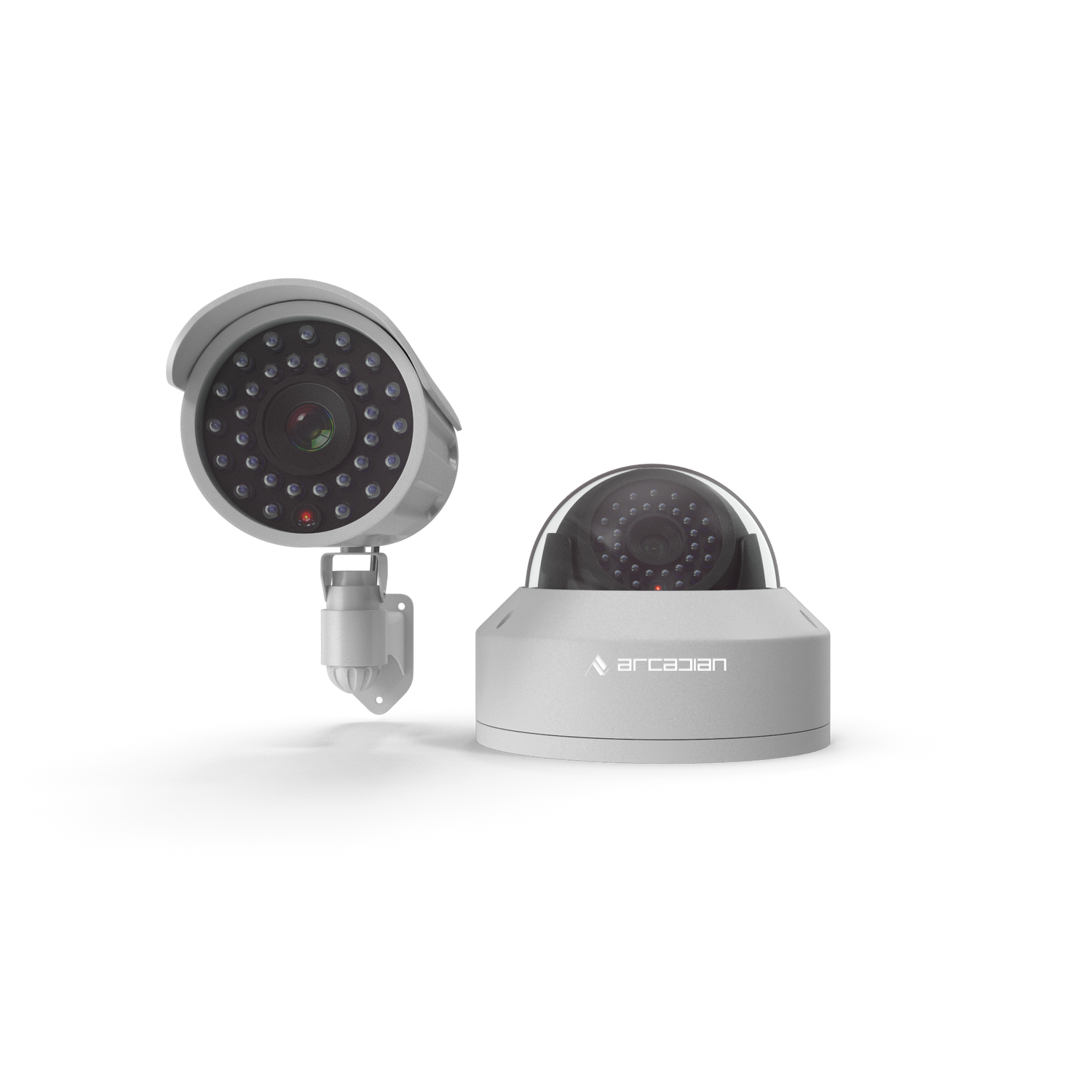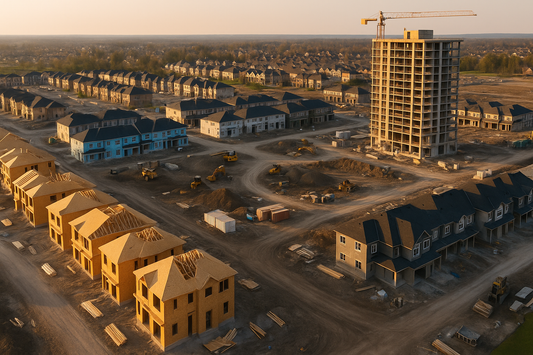How AI Security Monitoring Enhances Incident Response Time
Introduction: Every Second Counts At 2:37 a.m., a masked individual lurks outside a warehouse's side door. Traditional motion sensors fail to detect any anomaly—until it’s too late. But with AI security monitoring, real-time video analytics identify the suspicious behavior instantly, triggering a live alert. The on-call manager is notified within...

- Introduction: Every Second Counts
- What Is AI Security Monitoring?
- Why Traditional Surveillance Fails at Incident Response Time
- How AI Shrinks the Average Incident Response Time
- Industry-Proven Benefits
- The ArcadianAI Edge: Redefining Critical Incident Response Time
- Conclusion: From Delay to Defense in Seconds
- FAQs
Introduction: Every Second Counts
At 2:37 a.m., a masked individual lurks outside a warehouse's side door. Traditional motion sensors fail to detect any anomaly—until it’s too late. But with AI security monitoring, real-time video analytics identify the suspicious behavior instantly, triggering a live alert. The on-call manager is notified within seconds, and police arrive before the intruder can breach the building.
In high-stakes environments—like retail chains, cannabis dispensaries, and logistics hubs—incident response time can be the difference between a minor scare and a major loss. That’s where AI security monitoring steps in, transforming how businesses detect, assess, and respond to threats in real time.
Let’s explore how this technology accelerates critical incident response time and strengthens your entire security system.
What Is AI Security Monitoring?
AI security monitoring refers to systems that use artificial intelligence to watch surveillance footage in real-time, detect anomalies, and trigger immediate responses—without requiring constant human supervision.
Unlike traditional security systems, AI doesn’t wait for an alarm to sound. It acts preemptively.
Key Capabilities:
-
Behavior-based anomaly detection
-
Facial and object recognition
-
License plate tracking (LPR)
-
Real-time AI-powered video surveillance
-
Instant alerts and smart escalation
Together, these features contribute significantly to incident response time reduction and enhance decision-making during emergencies.
Why Traditional Surveillance Fails at Incident Response Time
Most CCTV setups are passive. Even when integrated with alarms, they rely on motion triggers, door contacts, or continuous manual monitoring.
Here’s why traditional setups falter:
-
Human fatigue: Guards miss up to 95% of activity after 20 minutes of monitoring
-
False alarms: Over 98% of burglar alarms are false—wasting time and reducing urgency
-
Delayed reaction: Video reviews happen after the incident—turning security into a forensic activity
This delay undermines the average incident response time, leaving businesses vulnerable when every second matters.
How AI Shrinks the Average Incident Response Time
1. Real-Time Threat Detection
AI detects suspicious activity instantly—even subtle movements humans might overlook. It continuously learns patterns and flags anomalies like loitering or access after hours.
Example: A cloud-based AI system alerts security when someone enters a restricted area—even if sensors aren't tripped—dramatically improving critical incident response time.
2. Automated Alerts & Escalation
When AI identifies a threat, it instantly:
-
Sends alerts to guards, business owners, or authorities
-
Initiates lockdown or access control protocols
-
Begins cloud-based video capture for evidence
Result: Instead of taking minutes, the incident response time shrinks to just 3–10 seconds.
3. Integrated Security Ecosystems
Platforms like ArcadianAI seamlessly integrate with:
-
IP security cameras
-
POS systems
-
Access control & scheduling software
-
License plate and facial recognition tools
This connectivity ensures faster detection, smarter action, and stronger incident response time reduction.
4. Empowering Security Guards and Operators
AI doesn’t eliminate guards—it enhances their precision. Instead of watching 20 screens, they focus only on AI-flagged footage.
Use Case: At a cannabis dispensary, ArcadianAI’s Ranger detects a theft attempt, sends a video clip to staff, and allows the guard to act instantly—cutting down the average incident response time.
5. Faster Forensic Investigation
Even post-incident, AI speeds up everything:
-
Search footage by object, behavior, or time
-
Export tagged video instantly
-
Provide clean, real-time evidence for police and insurers
This rapid evidence retrieval dramatically shortens incident response time in investigative follow-ups.
Industry-Proven Benefits
📊 Stats that showcase AI’s power:
-
AI security monitoring reduces average incident response time by over 50%
-
False alarms drop by up to 70%
-
Evidence review is 2x faster after AI adoption
Clearly, the shift to AI is more than just efficiency—it’s a strategic defense upgrade.
The ArcadianAI Edge: Redefining Critical Incident Response Time
ArcadianAI delivers more than surveillance—it offers real-time peace of mind.
With its AI-powered agent Ranger, businesses can:
-
Monitor multiple locations without NVRs
-
Detect intrusions, theft, or safety risks proactively
-
Improve guard workflows and lower costs
No need to invest in new infrastructure—Ranger works with your existing cameras while transforming your incident response strategy.
Conclusion: From Delay to Defense in Seconds
In security, delay is danger. The incident response time definition isn’t just a metric—it’s the gap between safety and loss.
With AI monitoring:
-
Alerts are instant
-
Reactions are proactive
-
Threats are neutralized faster
Don’t wait for a breach. Let AI turn your surveillance system into a real-time defender.
Get a free demo today and discover how AI monitoring can revolutionize your incident response time.
FAQs
1. What is incident response time in security systems?
Incident response time refers to how quickly a security system or team detects and reacts to a potential or actual security threat.
2. How does AI help reduce incident response time?
AI provides real-time analysis and alerting, enabling security teams to act in seconds rather than minutes or hours.
3. What’s the average incident response time for traditional systems?
Traditional surveillance systems typically take several minutes to detect and respond, often resulting in delayed action.
4. How does AI improve critical incident response time during emergencies?
AI flags threats instantly and can trigger automatic actions like lockdowns or alerts, reducing critical response times to seconds.
5. Can AI security systems eliminate false alarms?
They can reduce false alarms by up to 70%, thanks to behavior-based detection and object recognition.
6. What industries benefit most from AI security monitoring?
High-risk industries like retail, cannabis, logistics, and property management benefit significantly from faster response times.
7. Does AI security monitoring require new cameras or systems?
No. Many platforms, like ArcadianAI, integrate with existing IP camera infrastructure.
8. How does AI support human security guards?
AI filters out irrelevant footage, so guards focus only on verified threats—improving efficiency and accuracy.
9. What’s the difference between incident response time and detection time?
Detection time is when the system identifies a threat; incident response time includes the time taken to act on that detection.
10. Can AI help with after-incident investigation?
Yes. AI systems allow fast retrieval of footage by time, behavior, or object—speeding up evidence processing for law enforcement or insurers.

Security is like insurance—until you need it, you don’t think about it.
But when something goes wrong? Break-ins, theft, liability claims—suddenly, it’s all you think about.
ArcadianAI upgrades your security to the AI era—no new hardware, no sky-high costs, just smart protection that works.
→ Stop security incidents before they happen
→ Cut security costs without cutting corners
→ Run your business without the worry
Because the best security isn’t reactive—it’s proactive.







